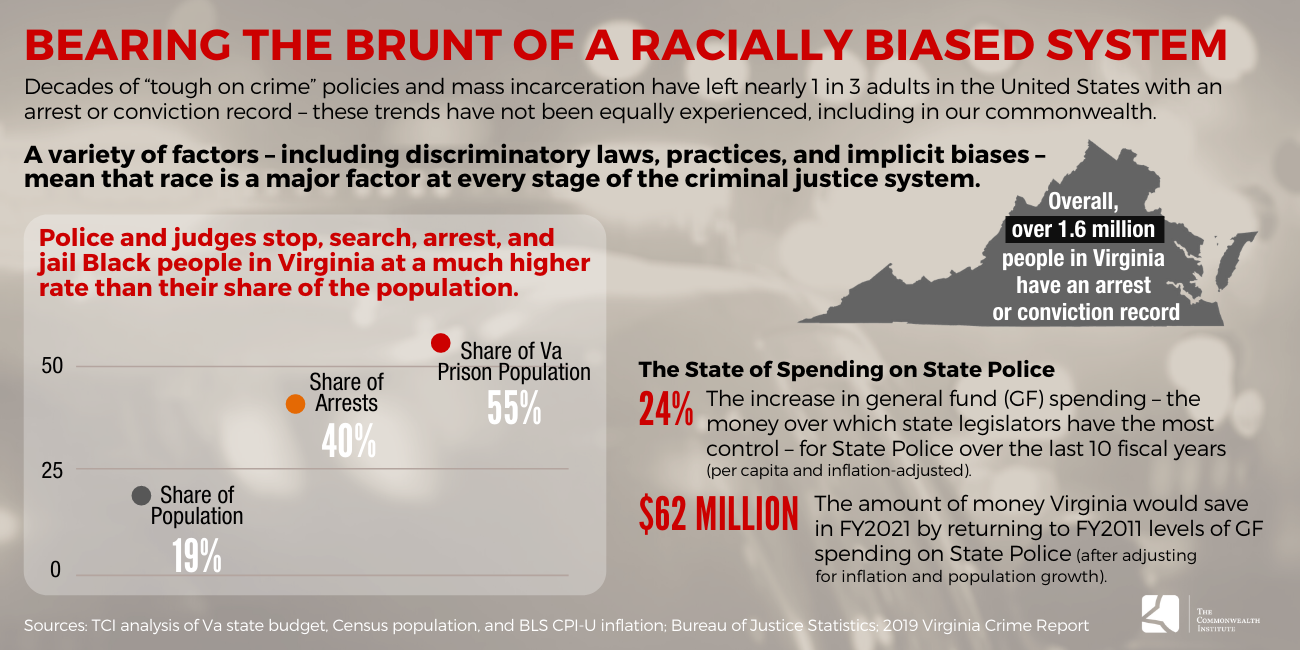July 28, 2020
Budget Matters: A Look at Police Spending In Virginia Localities
Racial injustice and unequal outcomes permeate our criminal justice system. A long history of discriminatory laws and practices—ranging from the so-called “Black Codes” that emerged in the Reconstruction era, to Jim Crow laws, to the more recent “broken windows” policing strategies and “three strikes” laws—means that race has always been a major factor at every stage of the criminal justice system.
Today, Black Americans continue to experience more frequent stops, searches, and arrests by police, while also facing higher rates of pre-trial detention. These stark differences in outcomes are not warranted by crime statistics; rather, they reflect a systemic racial bias. For example: while drug use rates are similar for Black and white people, police are significantly more likely to arrest Black Virginians for marijuana possession than their white counterparts. In another example: even when the same crime has been committed, Black people regularly receive longer sentences — on average, nearly 20% longer — than similarly situated white individuals.

As conversations about criminal justice reform continue, it is important for Virginia’s policy makers to understand budget choices that helped to fund the system we have today. Budgets, after all, mirror our values. To build on our recent research related to statewide spending on policing, the interactive table below summarizes per capita spending on law enforcement in Virginia’s localities.

